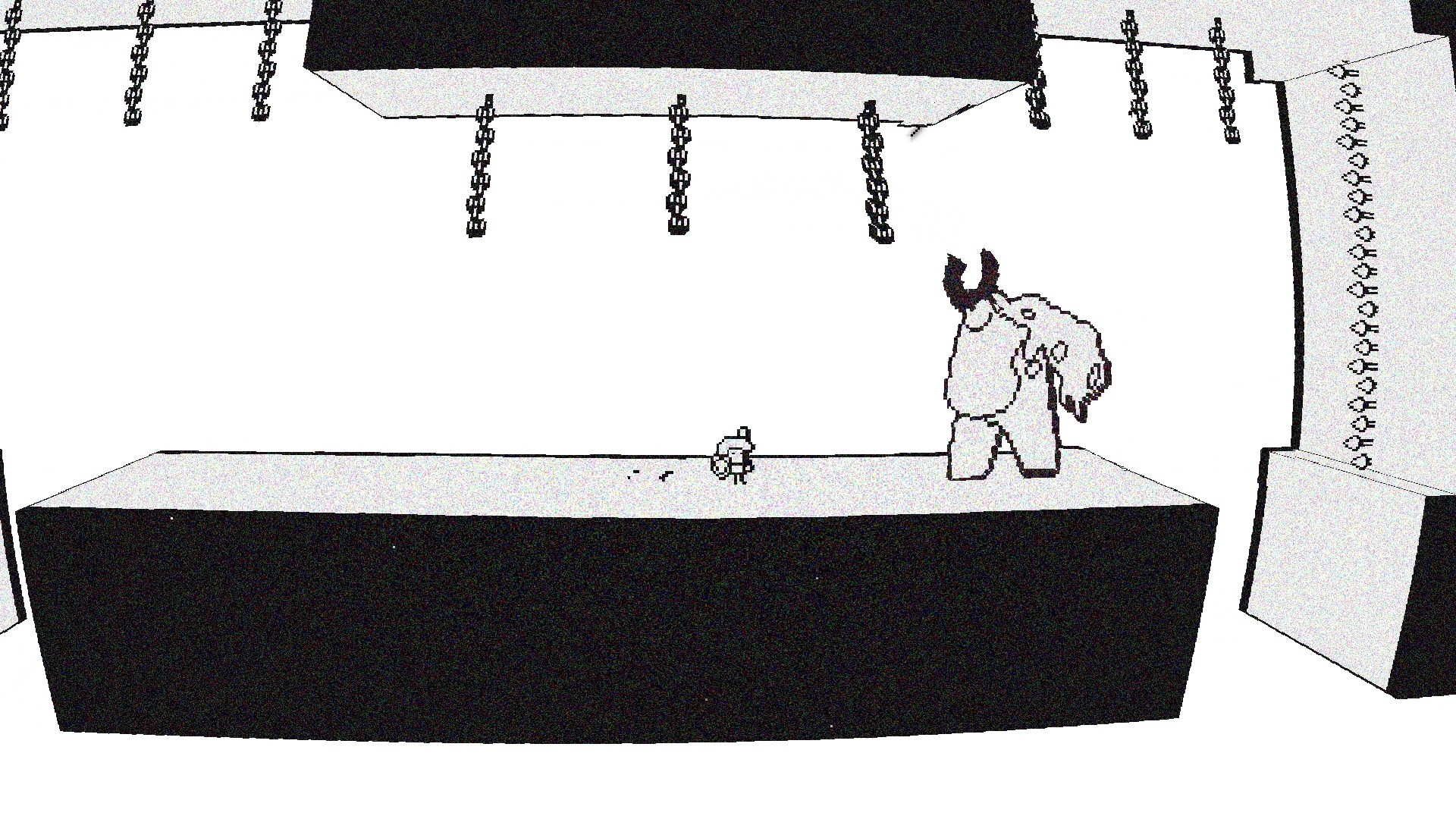Products You May Like
I’ve played through Gruta three times now (collectibles and broken achievements will do that to a man), but I still couldn’t tell you what the story is about. A child defeats a demon who has possessed their arguing parents? A child is coerced into fighting a demon by their manipulative parents? A wartorn country causes demons to grow on every doorstep? It could be any or all of these.

But for all the confusion, it’s this story that drew us in and kept us playing. After every other level of Gruta, your child-hero finds a chest with an illustration in it, and that illustration furthers the story. These are little comic book scenes, and you get the feeling that you’re meant to form a grand collage, but we’re buggered if we know what that collage is. The thing is, the images are arresting on their own. Soldiers burst into a house. A child climbs a floating staircase. Bones litter the floor. There’s a soup-thick sense of doom that comes from the imagery, and it motivated us to complete each level.
Outside of these moody black-and-white images, Gruta is actually a pretty standard action-platformer. You play the child, presumably on their way to fight the demon of the cutscenes, and you’ve got a sword and shield in hand to do it. The sword is nothing special: a blade with a swipe that’s barely longer than your body. The shield’s a little more handy. It can be held out perpetually, pushing away all enemies until you’re ready to fight them. And it can be used to reflect back projectiles, which kill everything in its path. The shield’s a better offensive weapon than the sword.
The child has a decent jump (the kid has clearly been working on their glutes), which makes for some precise and tight platforming. But that’s it for their move-set. There are no double-jumps or Metroid-like upgrades. This is bare-bones, but not in a way that feels limiting. Gruta can be completed in a too-short half an hour, so there isn’t much room for skill trees or upgrades anyway.
There’s an exaggerated depth to the levels, as you might be able to tell from the screenshots. It has an optical illusion-like effect, as the foreground moves much slower than the background. It’s not too far away from a faked 3D or VR effect, as if Gruta was a long-lost Virtual Boy title. It’s incredibly basic, but it worked for us. The simple line art gains a literal extra dimension through this illusory depth.

While the art is simple but effective, the level design is simple but not quite as successful. Each level is your common-as-muck journey to an exit. On the way are enemies that move, enemies that bounce and enemies that swoop. Platforms stay still and platforms move. Some are thin, some are wide. Gruta is competent, but rarely strays further from that. It’s not that it’s bad, it’s just unremarkable, with challenges that feel familiar from dozens of other games. Thwomps appear from Mario, while a boss is your classic ‘reflect missiles back at them’ bad guy.
So why the 3.5 at the end of the review? The reasoning’s slippery. We loved the end-of-level artwork, trying to communicate a story through comic book scenes that never quite coalesce to make sense. We loved the faux-3D art style. But there’s something about the very pedestrian gameplay that still managed to grip us.
Partly that’s because there’s no issue with it. There are no control gripes, no infuriating collision detection. It’s well-oiled, and that’s reasonably rare with indie platformers. There are also neat, smaller touches. Reflecting the bolt of a crossbow enemy causes the bolt to defy physics and plough through every last enemy, which is unnecessary but cool. Spike traps will damage enemies, not just you, so you can trigger them and watch the nearest blob get impaled. It’s not revolutionary, but the developers have cared enough about the details.
And sometimes you just want to go through those platforming motions. Gruta isn’t hard – thus the three playthroughs – so you can kick back and let your reflexes lead you to the end boss. There’s barely a level that will surprise you (the crossbow dudes can camouflage well, so we got the occasional bolt to the face), so you can book out an hour and just enjoy your platforming. There’s bliss in that.

There are moments where the polished lacquer splits a little. We ended up chasing collectibles and achievements, because why not, but we found that two achievements wouldn’t unlock. There’s no level select screen, so you can’t skip backwards or forwards to hunt for them either, which would have been an easy inclusion. But when these are the greatest faultlines in your game, you’re probably doing something right.
We’re almost ashamed of the 3.5/5 we’re handing Gruta. If you were to focus solely on the action-platforming, Gruta is one of the most unambitious games out there. It’s not even the best platformer we’ve played this week. By rights, we should be moaning and groaning and slapping on a lower score.
And yet. Gruta is saved by some effective art, an impressionistic story, and controls that are so tight that they manage to make the unremarkable levels somewhat remarkable. So, what the hell – we found Gruta to be rather endearing. We’re the ones who get to decide the score. 3.5 it is.
